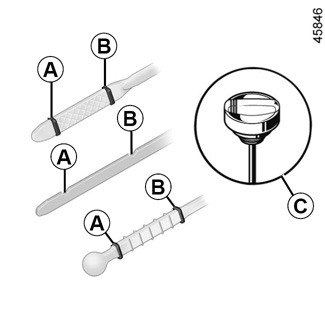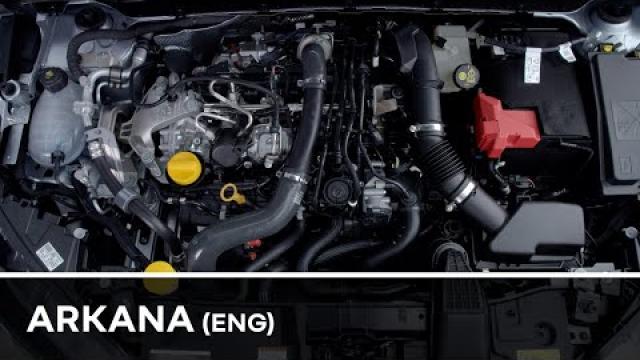ENGINE OIL LEVEL: general information

It is normal for an engine to use oil for lubrication and cooling of moving parts and it is normal to top up the level between oil changes.
However, contact your approved Dealer if more than 0.5 litres is being consumed every 600 miles (1,000 km) after the running in period.
Oil change frequency: check the oil level from time to time and certainly before any long journey to avoid the risk of damaging your engine.
Reading the oil level
The oil level should be read with the vehicle on level ground, after the engine has been switched off for some time.
The dipstick must be used to read the exact oil level and make sure that the maximum level has not been exceeded (risk of engine damage).
Depending on the vehicle, the instrument panel display only alerts the driver when the oil level is at its minimum.
- Remove the dipstick and wipe with a clean, lint-free cloth;
- push the dipstick in as far as it will go (for vehicles equipped with a captype dipstick C, screw the cap in as far as it will go);
- take out the dipstick again;
- read the level: it should never fall below the “mini” mark A and never exceed the “maxi” B mark.
Once the operation has been completed, ensure that the dipstick is pushed in as far as it will go or that the “cap-type dipstick” is completely screwed in.
Adding engine oil
Use a funnel or protect the filling neck area to avoid engine oil escaping on to a hot part of the engine compartment or a sensitive part (e.g. electrical components).
Fire hazard.
Exceeding the maximum engine oil level
Under no circumstances must the maximum fill level B be exceeded: risk of damage to the engine and catalytic converter.
If the oil level exceeds the maximum level, do not start your vehicle and contact an approved Dealer.
Before carrying out any action in the engine compartment, you must switch off the ignition STARTING, STOPPING THE ENGINE: vehicle with key or STARTING, STOPPING THE ENGINE: vehicle with card.
